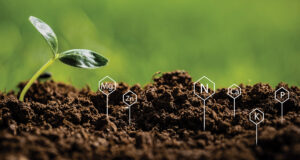Many plant owners share the opinion that one plant is never enough. Increase your own botanical collection by propagating houseplants, and in turn they will oxygenate your lungs and feed your soul.
Propagation is the process of growing new plants from existing ones — this can be through seeds or vegetatively with plant parts. Stems, leaves or roots that are removed from parent plants to root and form new plants are referred to as “cuttings.” This is an inexpensive and effortless way to get more plants without stretching your pocketbook.
The best time to propagate houseplants is early spring, but it can be done throughout the year. Large houseplants outgrowing their space are perfect for propagation. Use the cuttings to grow newly rooted plants that can be shared with other gardeners or gifted to friends.
When propagating, always use sterilized tools and containers in a clean space. An elevated level of cleanliness is necessary for the greatest chance of success. A high-quality potting mix will provide adequate moisture-holding capacity and good drainage without allowing cuttings to dry out or rot.
Many plants will also develop roots in a container of water, changed out with fresh water every three to five days. Before starting, make sure any propagated plant material is healthy and free of pests and disease.
Tip cuttings are taken by selecting a healthy, 3- to 5-inch shoot, with four to six leaves. With sharp pruners or snips, cut directly below a leaf node (where the leaf is attached to the stem). Remove any flowers or buds and the bottom two to four leaves. Insert the lower portion of the cutting into a container of moist potting soil.
Take several cuttings to increase your chance of one rooting and growing into a viable plant. Most houseplants can be propagated by tip cuttings, including croton, peperomia, pothos and philodendron.
Begonias and African violets are commonly propagated by leaf cuttings. This process includes one leaf blade and sometimes the petiole (leaf stalk). Using a sharp knife, slice horizontally across the main leaf vein and then lay the cutting flat on the soil with the vein side down. Roots will develop at the cut point along the vein.
Once cuttings have been planted or placed in their growing medium, cover the container with clear plastic to keep the air humid while the plant is forming roots. The goal is to never let the rooting media dry out. Place the cuttings in bright, indirect light. The plastic cover should be removed after the roots have developed.
Some plants may form roots within days while others may take several weeks. Cuttings can be dipped in rooting hormone powder before planting to improve root development. However, too much of a good thing can be bad — excess powder on the cutting will hinder the development of the roots.
Other more challenging methods of vegetative propagation are layering (rooting a new plant while it is still attached to the parent plant) and grafting (growing a plant shoot with desirable characteristics on a strong rootstock). Division is the easiest method of propagation, achieved by removing naturally produced offsets or shoots from the parent plant.
Keep in mind, not every plant is a candidate for propagation. Resource your local agricultural extension office for additional suitable plants and be patient — propagation skills come with practice. Experiment with new plants, new growing media and new propagation techniques to find what works for you.










